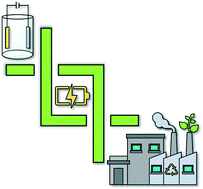Organic electrosynthesis: from academia to industry
Abstract
The growing impetus to develop greener and more cost-efficient synthetic methods has prompted chemists to look for new ways to activate small organic molecules. Among them, electrosynthesis is one of the greenest and cheapest since it is possible to perform redox reactions without the need for any chemical reagents. Even though electrosynthesis is on the verge of a resurgence, it is far from being a new discipline. In fact, organic electrosynthesis was popularised by Manual Baizer in the early 60s while working at Monsanto. In this article, we will review the major, as well as the most recent, achievements in industrial organic electrosynthesis.



 Please wait while we load your content...
Please wait while we load your content...